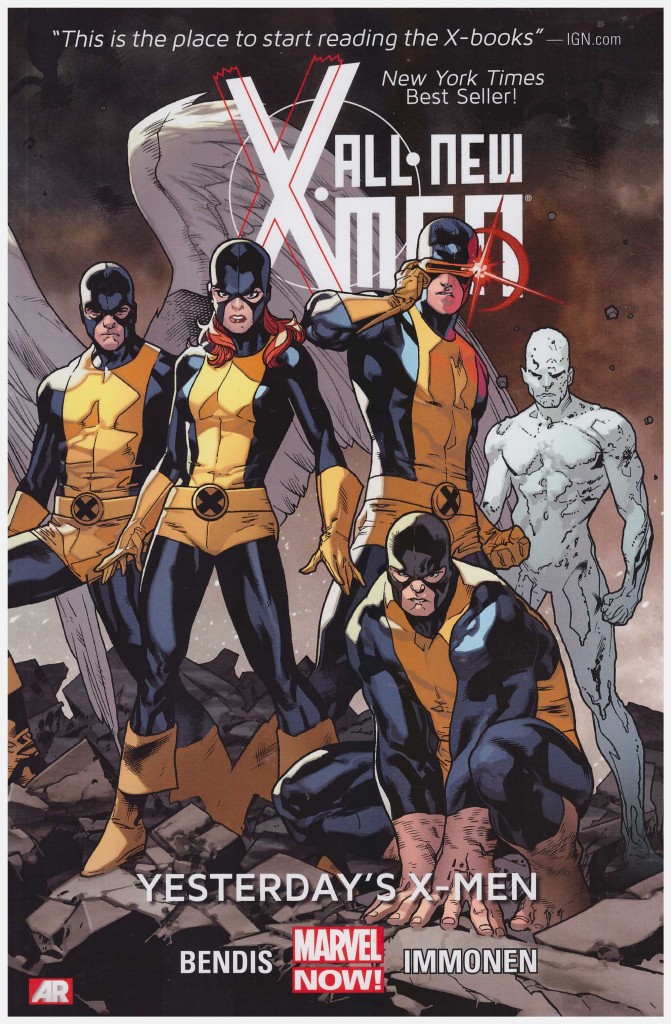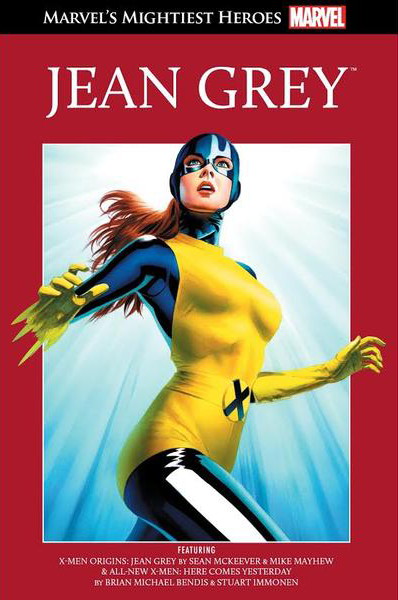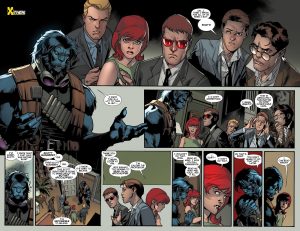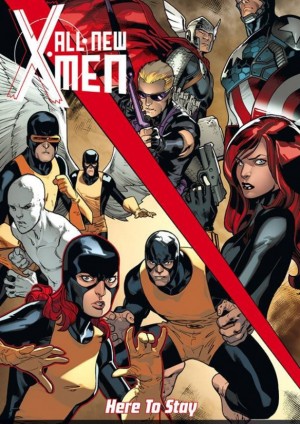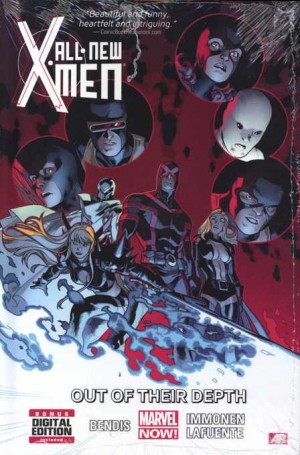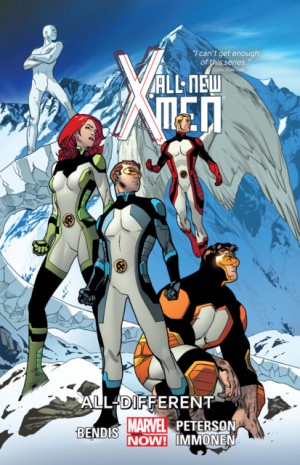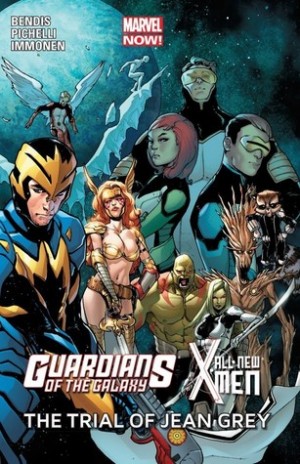Review by Karl Verhoven
After ten years of constantly re-defining the Avengers and eventually consolidating a franchise able to rival the Marvel’s long-standing success with the X-Men, Brian Michael Bendis switched his attentions to those mutants.
For those who’ve not read this book, there’s not really a way of reviewing it properly without divulging a specific plot point. That device is elegant and inventive, opening a world of dramatic possibilities, and those not wishing the secret spoiled should read no further than the third paragraph.
Bendis inherited the cast when a schism had developed between two different approaches to running the X-Men. On one side of the equation was founder member Cyclops, now converted to the idea that a mutant revolution is the only solution to combat human oppression. It’s a stance that’s left him with few allies among the mutant community, primarily Emma Frost, Magik and Magneto. The remainder of the active X-Men extend the dream of peaceful co-existence as established by the now dead Charles Xavier, occupying what’s now called the Jean Grey School of Higher Learning.
There Henry McCoy, the Beast, also an original X-Men foresees only conflict and disaster in Cyclops’ confrontational approach, and a chance remark offers the solution. The younger original X-Men would hate what Cyclops had become, particularly Cyclops himself, so McCoy devises a method of dragging them into their future.
The ensuing contrast between the younger, more naïve and uncomplicated X-Men and their later incarnations and allies is wonderfully played by Bendis. The younger team have the righteousness of youth, while the older team have the experience and knowledge that accompanies it. There is, of course, also the question of why Jean Grey should have a school named after her. And what the younger X-Men would make of Wolverine: “He runs the school and… the rest of his thoughts are pretty disgusting”, reveals Jean.
Given the dynamics already in play, this is inspired, yet Bendis doesn’t just regurgitate the past, he also creates a set of newly manifested mutants, the subject of dispute between the disagreeing X-parties. There’s a further reason for Beast wanting to set matters right that creates additional tension throughout. Some fudging is required as Jean Grey develops telepathic powers at an earlier stage in her development than she previously did, but that’s an element that can be explained later, and necessary for the story.
Stuart Immonen supplies the art. His no-frills style (one of several) is thoroughly under-rated. His draughtmanship is exemplary, his layouts and his characterisation great. It takes a skilful artist to pull off the naivety and relative innocence of the original team via posture and expression, and Immonen is that man.
In the UK this collection was titled Here Comes Yesterday, not to be confused with the next volume Here to Stay. In the UK this is also available in its entirety within the Jean Grey book of Hachette’s Marvel’s Greatest Heroes partwork.
